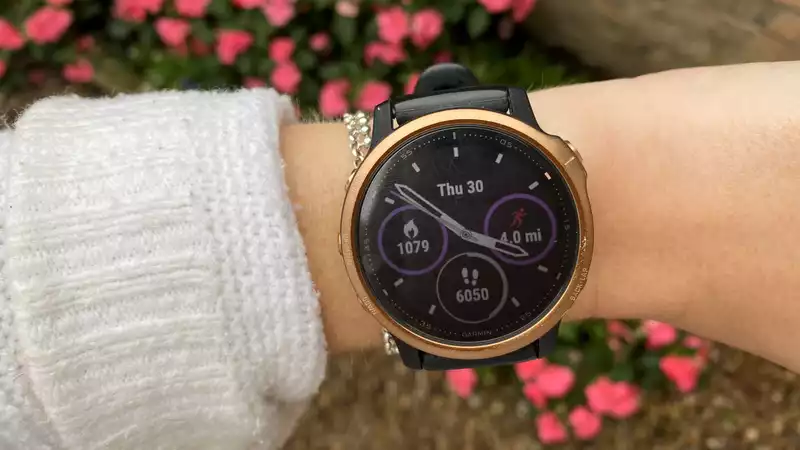As a fitness editor, I am very fortunate to be able to test so many running watches and fitness trackers to help readers figure out what to buy. But when it came to choosing what to put on my wrist for the London Marathon, it wasn't a difficult decision. I opted for the trusty Garmin Fenix 6S Sapphire.
The Garmin Fenix 6S Sapphire is a premium multisport watch designed for adventures in rugged terrain, with mapping and intelligent pacing features to help you pace yourself on hills. The London Marathon is definitely not a multisport adventure, so I won't need the mapping feature, but the Fenix 6S Sapphire has many other great features that make it an obvious choice for my fourth marathon.
The Fenix 6S is a chunky size. With a case size of 42mm, it is clearly larger than, say, my Apple Watch Series 6, but still not as large as the 51mm Fenix 6X Solar. That said, my main challenge when running with a smaller device like the Fitbit Charge 5, for example, is trying to see the screen while maintaining pace, and the Fenix 6S has a bright 1.2-inch screen that is easy to see, rain or shine, just like other Garmin running watches Like other Garmin running watches, you can customize the metrics you want to see on each screen.
On marathon day, I will again focus on the 5k splits to get under 4 hours, but I don't want too much data up front to focus on my run. I will be looking at lap distance, lap time, lap pace, and heart rate, all of which can be customized in the settings.
My best tip for running any race with a watch is to turn off automatic laps and manually clock my laps each time I pass a mile marker. This way, I can check my exact pace for the previous mile, as I often run farther than the course distance on race day.
I am hoping to beat my own record of 3 hours 58 minutes, but the battery life of the Phoenix 6S is 6 hours in GPS mode with music playback and 50 hours in GPS mode without music. Either way, I hope to reach the finish line and have my legs up before I have to worry about recharging my watch.
The Garmin Fenix 6S has the option to store up to 2,000 songs on the watch and access playlists from a variety of music streaming apps, including Spotify, Amazon Music, and Deezer. On training runs, I often leave my phone at home and use the watch to record my runs and play music and podcasts. On this race day, however, things are a little different. That's because at the London Marathon, runners must drop off their kit bags at the race expo a few days before the race. Since I don't want to run without my phone for days, I will be playing music from my iPhone on race day to conserve my watch battery, but the music-on-board feature is a useful feature that I have used before on race day.
After each workout, the Garmin Fenix 6S will tell you how long you need to be away from training to allow your body to fully recover. This time is based on training intensity, stress, daily activity, and sleep. While I don't plan on training hard the week after the race, I find the recovery tool to be really beneficial during training. I plan to track this in the days following the race as well, as getting a good night's sleep will shorten my recovery time.
The Fenix 6S came with a beautiful heathered nylon band. This may sound gross, but this strap was not easy to clean after sweating. Thankfully, the band is very easy to replace and I plan to use the silicone band for this weekend's race. This may not sound like a selling point for a running watch, but I don't want to worry about the strap snagging or rubbing at the 20-mile mark.
One of the reasons I choose the Fenix 6S over the Garmin Forerunner 245 or Forerunner 745 is because it doesn't look like a sports watch. I don't care much about how it looks on race day, but I know that when I'm celebrating with friends after the race, I'll love the look of the rose gold bezel on my wrist.
.









Comments